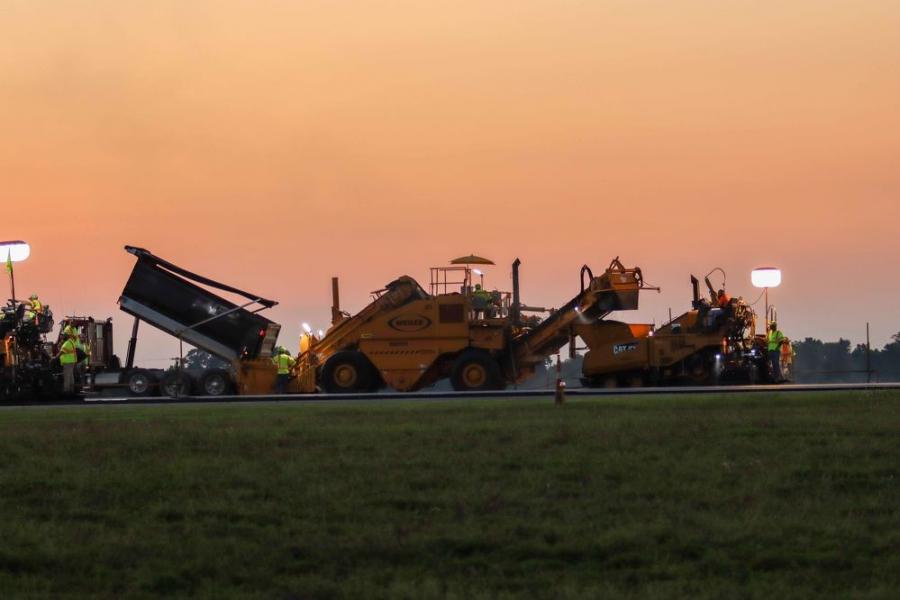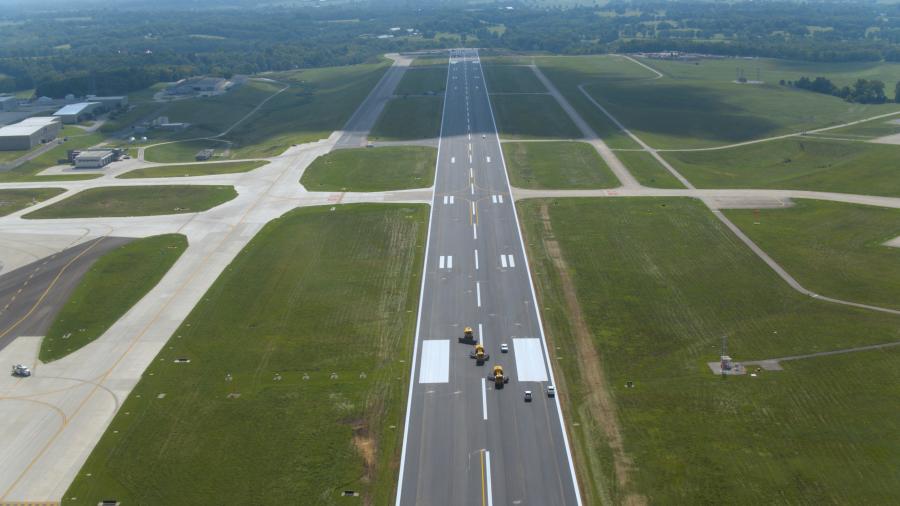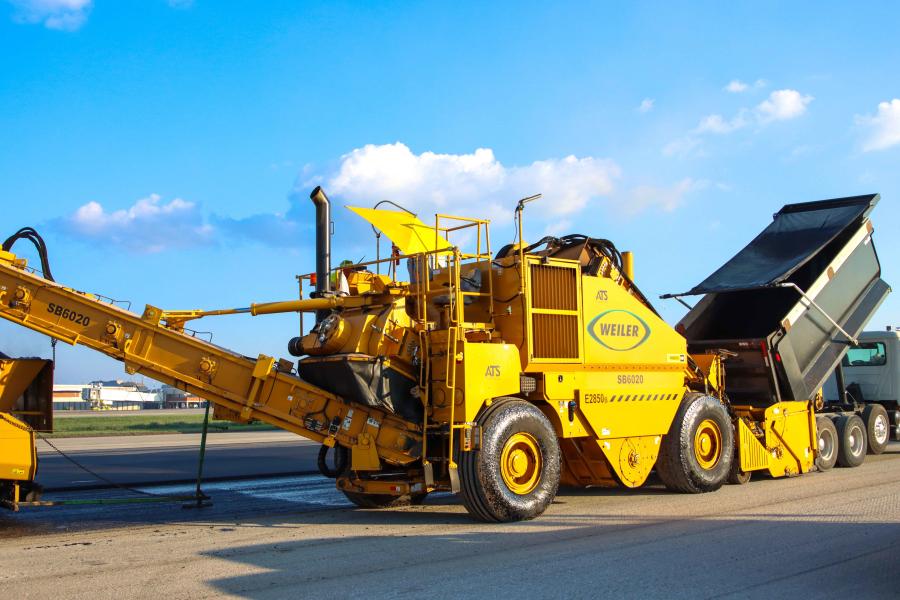Two asphalt plants kept the road mixtures continuously flowing during the 72-hour sprint: ATS Construction’s plant at Manchester Street and Allen Company’s Nicholasville Plant.
(Brian Wood photo)
Blue Grass Airport in Lexington, Ky., plays a key role in the economics of the state. Located near the capital, the airport services a city that is home to the state's flagship university and is a center for horse racing and horse breeding. A recent study showed that the airport contributed nearly 3,500 jobs and an economic output of $370 million. The airport served more than 1.4 million passengers in 2019.
When this busy hub is closed to make repairs on its main runway, it's big news. Flights for all commercial and fixed-wing aircraft were shut down for 72 hours from Aug. 19 to 22 for this project, which enlisted an army of contractors from around the state to do quality repairs and do it quickly.
The cost of the repairs and renovations was $16.2 million. Some 21,000 tons of asphalt was required for the 7,000-ft.-long by 150-ft.-wide runway.
Eric Frankl, executive director of Blue Grass Airport, said, "We are grateful for the assistance of our congressional partners and the Federal Aviation Administration who helped secure federal funding for this project. Airports have an important economic impact for the regions they serve. This project will enable us to maintain a durable pavement runway for years to come."
As with any coordinated effort, the project required practice before starting. Todd McDaniel, project engineer of ATS Construction, headed up the paving.
"We spent a considerable time practicing how we were going to use the 1,500 truck-loads of asphalt required for the job," said McDaniel. "For the milling part of the job, we had specifications that required only one-fourth of an inch tolerance. That was the tightest tolerance anyone around here had heard of and was only possible with today's modern equipment."
The paving teams utilized Sitech's Trimble Siteworks software to ensure they were meeting the specifications. The equipment handled files and 3D data sets so workers could identify issues immediately to keep the operation on schedule. Once again, practice paid off as the truck drivers had to know how they could take away the old asphalt without interfering with the sightlines of the equipment and its exact measurements.
High-Tech Equipment
The practice and high-tech machinery enabled the workers to meet the exacting requirements. Also, the 200 workers on the project were able to complete the round-the-clock work with no injuries.
The paving teams used Caterpillar and Wirtgen milling machines. The machines performed 74 or 88-in.-wide passes. The eight machines ran continuously gathering some 17,00 tons of millings which will be used on infrastructure projects in the future. Thirty measuring stations checked the readings to make sure the project was reaching the required measurements. Inspectors regularly monitored the dimensions.
"The airport leaders wanted the final paving to increase the crown of the runway slightly to ensure that rain would quickly drain away," said McDaniel.
The new pavement created a slightly elevated cross slope. The paving team used a polymer asphalt PG 76-22 binder grade with high asphalt content. No recycled asphalt was used in the runway construction. Two pavers were continuously operating once the paving function began. Each paver used a Weiler material transfer vehicle to avoid segregation in the paving process. Two asphalt plants kept the road mixtures continuously flowing during the 72-hour sprint: ATS Construction's plant at Manchester Street and Allen Company's Nicholasville Plant.
Paving the Blue Grass airport runway was different from a traditional interstate highway job.
"Airport runways must carry heavy loads and withstand the stresses of takeoffs and landings," said McDaniel. "So, the pavement needed to be considerably stiffer than an ordinary highway job."
Another airport uniqueness is the need for a pristine final pavement. Foreign objects on the pavement can be sucked into jet engines and cause considerable damage. Workers used an Elgin Sweeper vacuum truck to clean up after the paving was complete.
Practice and attention to detail paid off as the milling and paving teams beat the 72-hour deadline with time to spare.
"The milling operation required 18 hours, plus four hours of cleaning and prep," said McDaniel. "The team completed paving in 30 hours, then did work on the shoulders, performed striping and clean up. We had 64 tasks to be done in a tight time frame. We are proud of the final product."
Finding enough trucks and truck drivers continues to be a headache for infrastructure projects like this.
"There is a high demand for trucking," said McDaniel. "That can make it difficult to find trucks when needed and costs are increasing."
While project planners sweated the details before the sprint began, they also watched the weather reports with concern. No backup weekend had been planned. Hurricane Fred pounded the region with heavy rain, some flooding and even tornadoes during the week. Fortunately, milling and paving operations continued in dry weather for the Thursday to Sunday sprint.
"The Lexington airport is very important to this area," said McDaniel. "The memory of working on this project is something I will cherish for a long time. We were relying on so many people to do their jobs and repeatedly they stepped up to the challenge and did the job in a challenging time frame." CEG
Today's top stories




























